The flowering stage of Cannabis plant is an exciting one! It is when your plant flips from the vegetative stage and starts to develop little buds that will hopefully grow to thick, potent ones and give you a bountiful harvest.
It is a critical time when your plants will also start to produce aromatic compounds like terpenes and our favorite cannabinoid, THC (or CBD!).
So, when does the flowering stage start? It all depends on the strain you’re growing, the conditions you are maintaining, and whether it’s indoors or outdoors.
In this article, we’ll share detailed information about Cannabis flowering stage, its early signs, and the required adjustments to match the needs of this stage.
Key Takeaways
- For cannabis plants growing indoors, flowering starts when you switch your grow lights to a 12/12 light cycle—12 hours of light and 12 hours of darkness each day.
- For cannabis plants growing outdoors, the flowering stage begins towards the end of summer, after the fall equinox, when days become shorter and nights become longer.
- The early signs are taller growth and the emergence of pre-flowers at the nodes, where branches and leaves meet the main stem.
- During this stage, the plants require nutrient solutions with higher phosphorus, potassium, and calcium levels.
Very broadly speaking, a cannabis plant typically spends 3-10 days in the germination stage, 2-3 weeks as a seedling, and 3-16 weeks in the vegetative phase before flowering.
How the flowering stage progresses between indoor and outdoor-grown cannabis can vary widely.
In the sections ahead, you will learn about when to expect flowering and the early signs to look for in each environment. But first! Let’s look at what flowering is all about.
What is the Cannabis Flowering Stage?
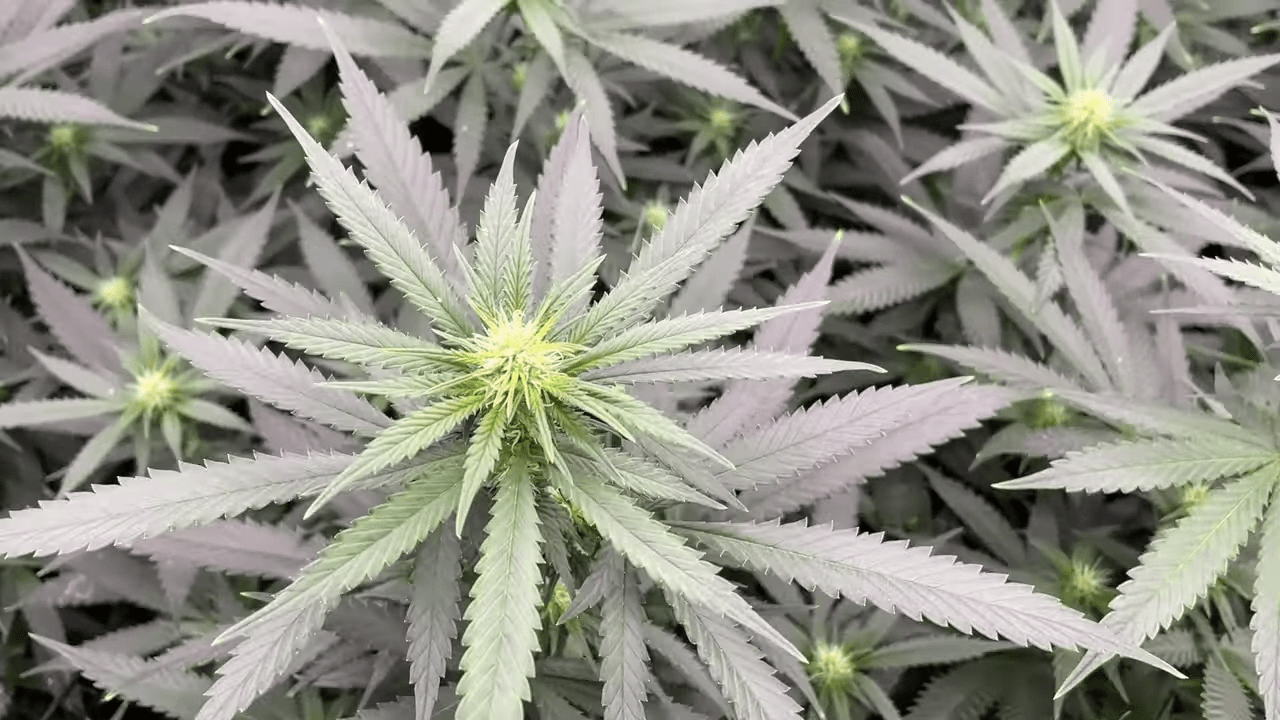
The flowering stage is one of the most exciting phases in cannabis cultivation. It typically lasts for 6 to 11 weeks, depending on the strain.
This is when the plant is transitioning from directing its energy to growing foliage in its vegetative stage to focusing on the development of buds.
During this stage, the plant produces cannabinoid-rich buds at the nodes, where branches and leaves meet the main stem.
Trichomes, the crystal-like structures on the buds, are also formed. These structures are packed with terpenes that give the plant its unique flavour and potency, depending on the strain you’re growing.
Importance of Timing in Flowering for Yield and Potency
By closely watching your plant throughout the flowering stage, you can figure out the best time to harvest your cannabis plant.
If you harvest too early, the buds may not fully develop, resulting in lower yields and weaker effects.
On the other hand, harvesting too late can lead to overripe buds which may have lower potency and less flavor.
When Does Flowering Start Outdoors?
Exactly when an outdoor cannabis plant flowers will depend on the strain and the environmental conditions. It usually happens towards the end of summer, after the fall equinox, when days become shorter and nights become longer.
Typical Timeline for Outdoor Flowering
Flowering times differ greatly by the strain, but here’s a rough guide on a typical flowering period for photoperiod plants outdoors.
Weeks 1–3:
During this phase, weed plants stretch and grow rapidly, producing white hairs (pistils).
This “flowering stretch” is normal and helps plants maximise light exposure for better bud development. Some strains may nearly double in height during this period.
Weeks 3–4:
Plants will stop growing and focus on bud development. Buds will become larger, with thick calyxes, more white pistils, and a layer of trichomes. Aromas may become more intense.
Weeks 4–6:
Buds will grow dense and thick, covered with white pistils and a strong layer of trichomes, producing a pungent aroma.
Expect noticeable changes in bud size and density compared to earlier weeks. Fast-flowering strains may be nearing harvest.
Weeks 6–8:
In the final flowering stage, buds will be dense and firm, and trichomes will turn from clear to milky white, with some amber.
This indicates it’s time to harvest. To confirm, check the trichomes with a magnifying glass. Pistils will also darken as harvest time approaches.
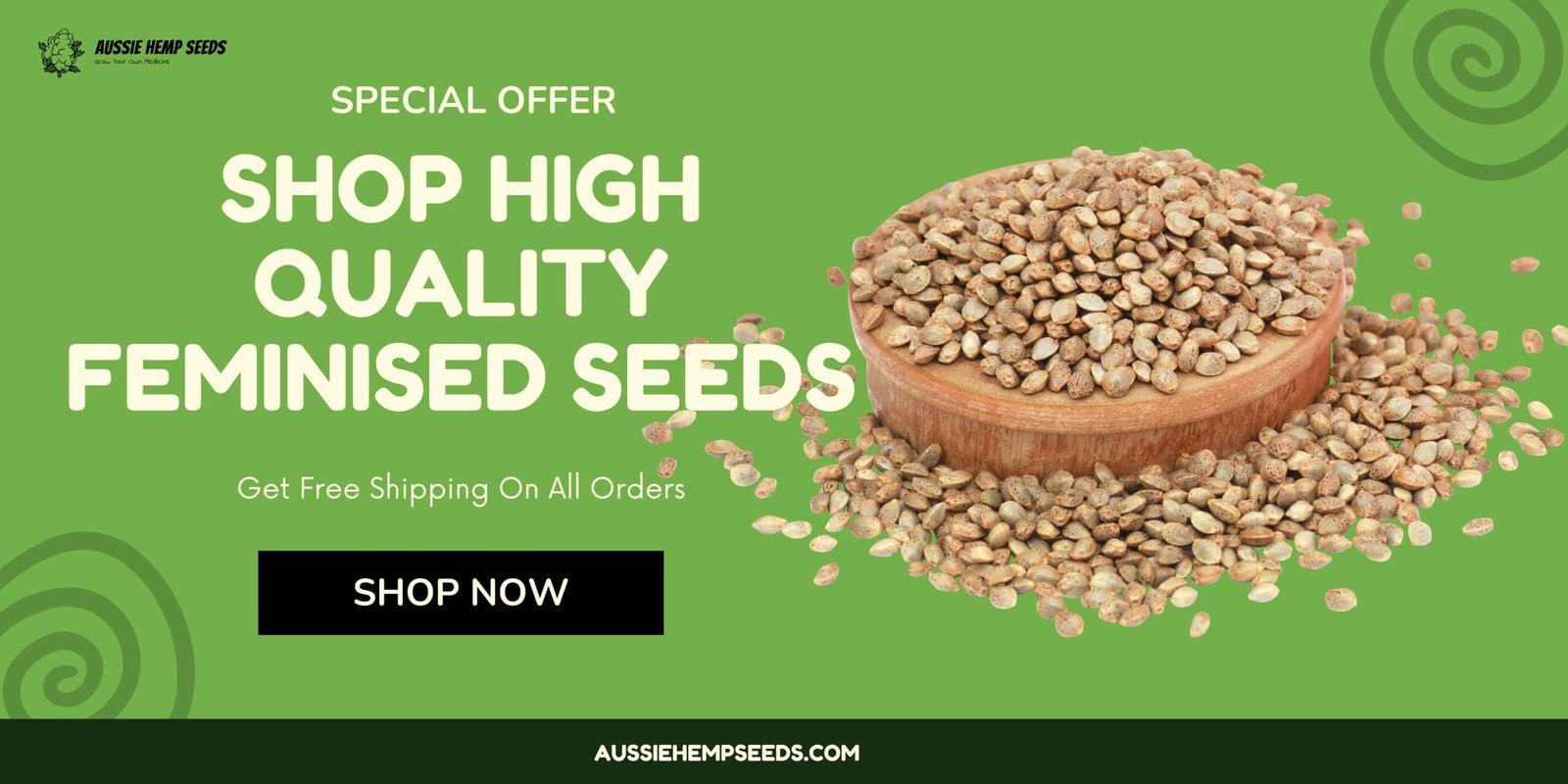
Understanding Photoperiod and Its Effect on Cannabis Flowering Phase
Cannabis plants fall into two main types based on how they start flowering: autoflowering and photoperiod strains.
Autoflowering strains begin flowering on their own after a certain age without needing changes in light.
In contrast, photoperiod strains need specific light cycles to start flowering – 12 hours of darkness daily.
To grow photoperiod strains outdoors, watch natural light patterns closely.
Regional Differences in Flowering Time
Your region plays a big role in when and how your outdoor weed plants flower.
Remember that the main trigger for flowering in cannabis plants (photoperiods) is the change in daylight hours.
Your latitude, altitude, and local weather affect how much sunlight your plants get and how they grow.
Growers in regions closer to the equator will experience more steady light throughout the year, which allows multiple growing cycles each season.
First Signs of Flowering Outdoors
The first thing you’ll notice during the pre-flowering stage is the plant’s sex—male, female, or hermaphrodite.
This stage is called pre-flowering because it happens before the actual flowering starts. You’ll also see your marijuana plant growing much taller, likely to support large flowers that will develop later.
Pre-Flowering Stage Indicators
Male pre-flowers usually develop round pollen sacs, while female pre-flowers have hairlike structures called pistils.
You’ll see them at the nodes, which are the points where branches and leaves join the main stem.
Another indicator is the shift in growth. The weed plant might stop growing taller and focus on developing more branches and nodes.
This change happens because of the hormonal changes that occur during flowering.
How to Recognise Early Flowering Signs
In addition to the above indicators, the plant will start producing more resin. This resin is where cannabinoids like THC and CBD are made, affecting the plant’s aroma and strength.
You can monitor this development by feeling the leaves, stems, and especially the bud sites, which will feel sticky.
Also, observe the changes in the plant’s leaves. Depending on the strain, some leaves could become narrower with serrated edges during the flowering stage.
Managing Outdoor Flowering
Managing outdoor cannabis plants, particularly after flowering begins, involves adjusting nutrients, closely observing how the plant responds, and using the right growing techniques.
Tips for Maximising Bud Growth During Flowering
Some advanced growers often use defoliation and pruning techniques to increase bud production in cannabis plants.
Pruning involves trimming parts of the plant to help channel more energy towards developing buds. Defoliation means removing some leaves to improve airflow and light exposure around the interior leaves and buds.
Advanced Nutrients for Outdoor Flowering Weed Plants – Feeding Chart Example
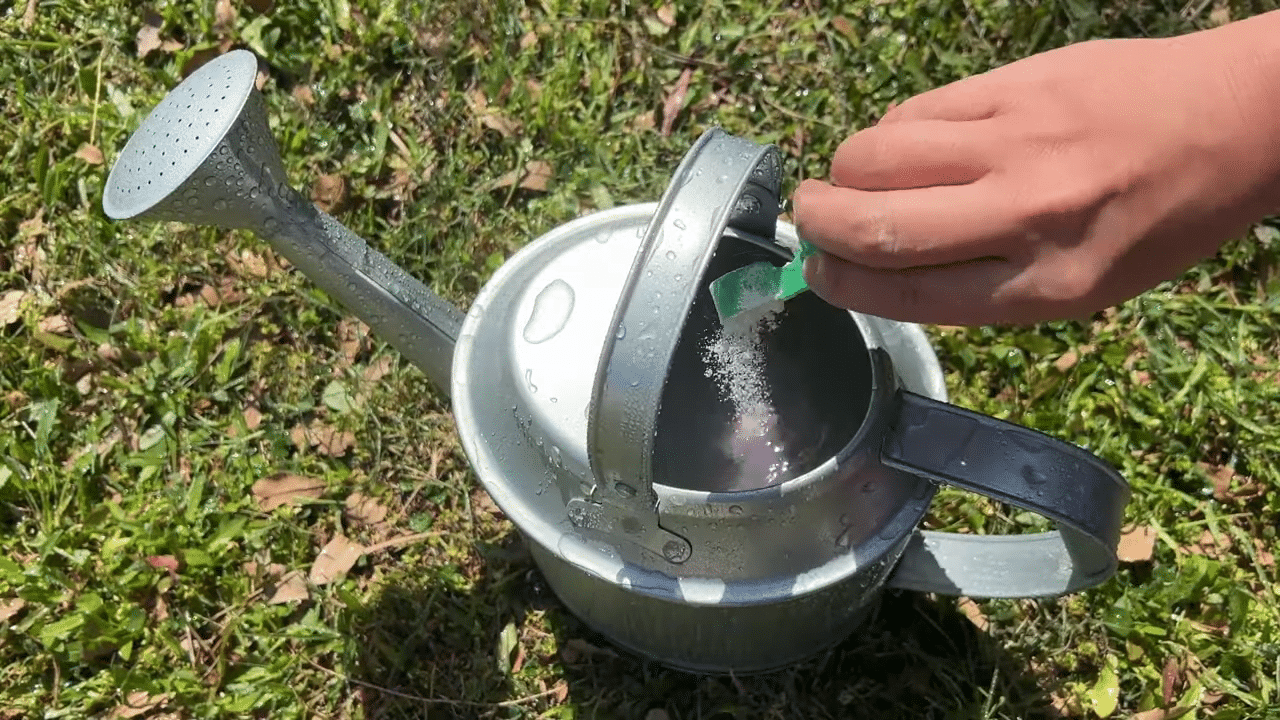
As your cannabis plants begin flowering, their nutrient needs will change significantly. In this early stage, they respond well to nutritional solutions with higher phosphorus and potassium levels.
The exact nitrogen, phosphorus, and potassium (NPK) ratio you choose is up to you, but be cautious not to overdo it early on to avoid overfeeding your plants and causing nutrient burn.
We recommend increasing the nutrients around the second week of flowering. Here’s a feeding chart example you can work with for your NPK ratio:
| Flowering stage | NPK ratio (in approx.) |
| Week 1 to 3 | 5-7-10 |
| Week 3 to 4 | 6-10-15 |
| Week 4 to 6 | 5-9-12 |
| Week 6 to 8 | 4-7-10 |
As your plants develop larger buds, they’ll require more nutrients, but be careful about overfeeding at this stage.
You can choose the specific nutrient mix you use at this stage, but closely monitor how your plants react to changes in their feeding.
When Does Flowering Start Indoors?
When growing cannabis indoors, the flowering stage begins when you switch your grow lights to a 12/12 light cycle—12 hours of light and 12 hours of darkness each day.
The consistent 12 hours of darkness signals to the plant that it’s time to start flowering, as it “senses” that winter is approaching due to the shorter days.
First Signs of Flowering Indoors
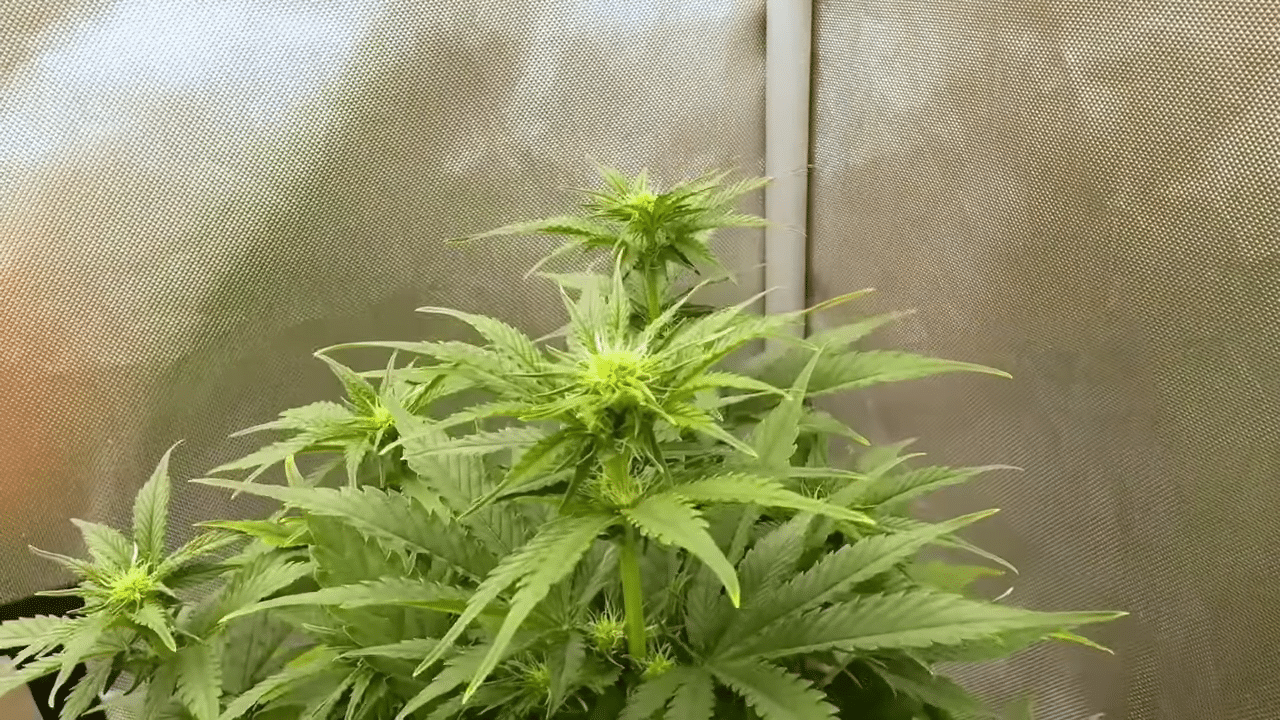
Just like outdoor plants, indoor plants start growing quickly and get taller real quick as they begin to flower.
But indoors, this growth spurt happens within the first few weeks after you change the light schedule to 12 hours of light and 12 hours of darkness. After flipping the plants, they often grow nearly twice their height.
Controlling the Flowering Stage Indoors
Many people believe that the 12 hours of light trigger flowering, but it is actually uninterrupted darkness that causes the flip.
If the plant gets even a small amount of light during the dark period, it might not flip, so watch closely for any light leaks.
In the following sections, we’ll cover indoor photoperiod vs. autoflower plants and the typical timeline for flowering.
Indoor Autoflowering Plants
Autoflowering cannabis plants don’t need specific light schedules to begin flowering. These plants typically spend about 3-4 weeks in the vegetative stage.
Typical Timeline for Indoor Flowering
Assuming you’re growing feminised cannabis seeds:
Weeks 1-3
Your plant will focus on growing taller and producing new stems and leaves. At this stage, the plant is still quite resilient, similar to when it was in the vegetative stage.
However, it’s crucial to continue taking good care of your plant to avoid any issues.
As your plant stretches, it will grow out its bud sites, and any stunted growth during this time could result in smaller and fewer buds.
Weeks 3-4
Here, your plant’s rapid stretching will begin to slow down but continue to grow upward.
At this stage, you’ll start seeing actual buds forming, with white pistils sticking straight out.
During this time, your plant will become more sensitive to its environment and nutrient levels, so it’s important to monitor it closely.
Also, your plants might start to develop aromas if they haven’t already. However, some strains like the Northern Lights don’t have a strong odour.
Weeks 4-6
The buds will be fattening up at this flowering stage, and the stretch will nearly be over.
At this point, your focus will shift from training your plant to supporting its buds as they grow heavier.
Although some defoliation can help expose bud sites, leave enough leaves on the plant to power the growth of the buds and provide some defense against nutrient or leaf problems.
You’ll see white pistils sticking out as your buds grow, but the buds themselves will get fatter each day.
Weeks 6-8:
Here, your plant will fully switch its energy to growing buds, and you won’t see any new leaves or stems.
It’s normal for some of the lower leaves to turn yellow (fading) as the plant directs its energy to the buds getting the most light, but overall, the plant should still be mostly green.
Week 8 and above:
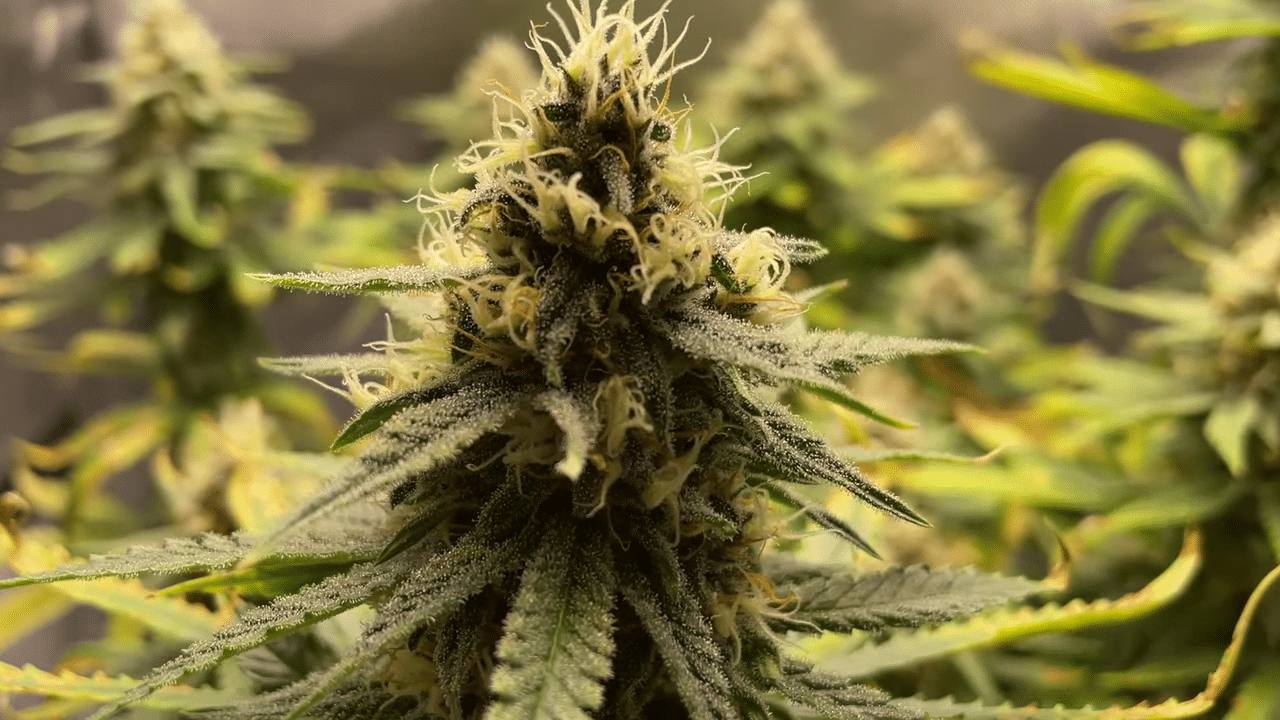
From here on out, your main task is maintaining the plant until it’s ready to harvest.
Many growers perform a final flush during this period, giving their plants only plain water for a few days to a few weeks before harvest.
At this stage, the buds are rapidly fattening up. Trichomes and pistils are maturing, although new pistils might still appear as the buds grow.
Keep a close watch on the buds, pistils, and trichomes to determine the perfect harvest time based on the effects you want.
There’s a lot that goes into ensuring the right time for harvest, so check out our full when to harvest your cannabis plant guide if you like!
Optimising Indoor Flowering
When managing the flowering stage of your indoor cannabis plants, focus on controlling their growth during the stretch phase. It also involves adjusting the light schedules, nutrients, and temperature.
Managing Flowering Stretch
If you are running out of headroom, gently bending the stretching stems down and away from the centre of the plant can help keep the canopy level. This technique is known as a form of low-stress training (LST).
Temperature Control
Cannabis plants thrive in cooler temperatures during the flowering stage. Since each strain is different, finding the ideal temperature may vary.
Generally, for the first three weeks of flowering, try to keep daytime temperatures around 26°C and nighttime temperatures between 16°C and 18°C.
Quick Tip: Keeping nighttime temperatures lower helps your buds develop better.
From weeks 4 to 8 of flowering, maintain humidity at 30–40% to prevent mould, mildew, and pests. Also, keep daytime temperatures no higher than 25°C and nighttime temperatures around 16–17°C.
Light Schedules for Optimal Flowering
Stick to the 12/12 light cycle during the flowering stage. This change tells the plant to stop growing leaves and start making buds.
This light cycle also helps the plant produce terpenes, enhancing the buds’ quality.
Did you know?
- It is widely believed that keeping plants in total darkness for 48–72 hours before harvesting boosts the number of trichomes on their plants, making the weed more potent. While this is worth the try, it is not always guaranteed as many other factors are involved.
Meanwhile, if your leaves turn yellow in weeks 6–8, pay close attention to your plant.
Yellowing leaves at this stage are usually due to light burn or nutrient issues, which is common during the flowering stage.
When many leaves turn yellow or die early, your plant can’t absorb as much light energy, which can result in smaller buds.
However, some yellowing is also normal as your plant directs its energy towards the buds and away from the leaves, in a process called fading.
Nutrient Requirements During Indoor Flowering
The nutrient guide from earlier in this article for outdoor growing also applies here.
However, be more cautious about nutrient burn, which occurs when plants receive too many nutrients, causing the tips of the leaves to get “burned.”
Keep a close eye on your plants for any signs of nutrient overfeeding throughout the flowering weeks, but especially during weeks 5 and 6.
In the final weeks, focus on phosphorus, potassium, and calcium as key nutrients.
Two weeks before harvest, flush your plants with plain, pH-balanced water. This helps them use any remaining nutrients and preserves the natural flavour of your buds.
However, flushing is a somewhat controversial process and there are growers on both sides of the coin, both for and against the process.
-
Product on sale
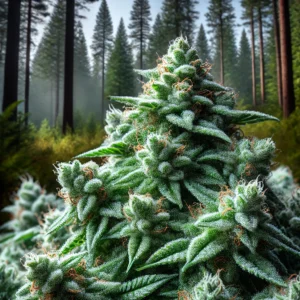 Pine Auto SeedsFrom $5.00 per seed
Pine Auto SeedsFrom $5.00 per seed -
 5 Alive Feminised SeedsFrom $8.00 per seed
5 Alive Feminised SeedsFrom $8.00 per seed -
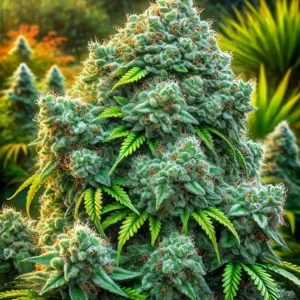 Big Bud Fast Version Feminised SeedsFrom $8.00 per seed
Big Bud Fast Version Feminised SeedsFrom $8.00 per seed -
 Durban Poison Feminised SeedsFrom $8.00 per seed
Durban Poison Feminised SeedsFrom $8.00 per seed -
 Bruce Banner Feminised SeedsFrom $8.00 per seed
Bruce Banner Feminised SeedsFrom $8.00 per seed -
 Blue Dream Feminised SeedsFrom $8.00 per seed
Blue Dream Feminised SeedsFrom $8.00 per seed
FAQs
What Should I Do If My Plant Starts Flowering Early?
A sudden change in the light cycle can stress a cannabis plant and cause it to start flowering early. For example, if a plant grown under 18-hour indoor lighting is moved outdoors, it might bloom sooner than expected.
Other factors that can cause early flowering include starting your plants too early in the season or not providing enough light for proper vegetative growth.
To fix an early-flowering plant, put it back under 24/7 lighting. Eventually, the plant should start to re-veg, although its leaves may initially look deformed. This is normal and nothing to worry about.
Can I Force My Outdoor Plants to Flower Sooner?
Yes, you can force your outdoor weed plants to flower sooner.
To force outdoor plants to flower early, simply reduce their light exposure. The method you use depends on your growing setup and local weather.
In mild weather, a wooden or PVC frame with a light-proof tarp can support a few plants on a balcony or terrace. At night, you can cover the tarp to give the plants 12 hours of uninterrupted darkness, encouraging them to bloom.
Alternatively, move your plants to a light-proof garage, cellar, or shed at night for the same effect.
Forcing early flowering is useful in cool, temperate climates with cold, damp autumns and early winters that might affect your harvest.
In the Northern Hemisphere, start in mid-June or early July; in the Southern Hemisphere, mid-January or early February.
Wrapping Up
Each stage of cannabis plant growth requires careful attention to environmental conditions, nutrients, and regular monitoring, and the flowering stage is no different.
Whether you’re new to growing marijuana or an experienced cultivator, we hope this guide helps you identify and optimise your plant’s flowering stage.
Have a fantastic growing season!
 AUS Stock - Local Delivery
AUS Stock - Local Delivery